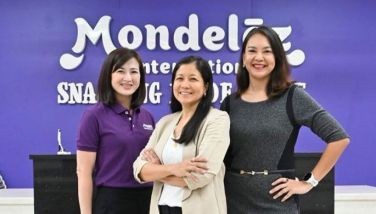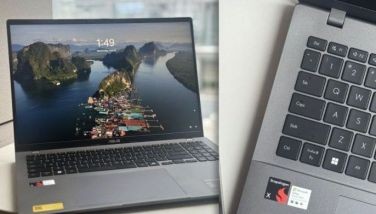Who wants to remain a millionaire?

MANILA, Philippines - The setup at last month’s Citigold event in the NBC Tent at Bonifacio Global City was a take on the TV show Who Wants To Be A Millionaire? Except the room was already full of millionaires. Guests were Citigold clients, who have individual investments with Citibank of at least P4 million, and they came for the Citi 2010 Mid-Year Outlook Event, which was a briefing on the financial market to give them the latest report on market trends and investment choices for the rest of the year and beyond.
This is one of the perks of being a Citigold client and it’s all part of the Gold Conversation Series: access to the latest financial insights and analyses gathered by Citi’s global and local research group. The mid-year outlook is of particular importance to investors whose portfolios are maturing and they now have to decide how to balance their investments.
Speakers of the event were Haren Shah — director and senior investment strategist, for Citi Asia-Pacific Global Wealth Management Group and Global Cosumer Group — and Ramon Melchor E. Tejero, head of research, analysis and communications of Citicorp Financial Services and Insurance Brokerage Philippines, Inc. (CFSI).
Shah’s team is responsible for coordinating the intellectual knowledge within the Global Wealth Management Group and Global Consumer Group to provide an overall strategy for both private bank and Citigold Wealth Management clients in Asia Pacific. Tejero heads the research team of CFSI, which is the brokerage arm of Citi Consumer Bank Philippines. He is a 17-year veteran in the banking industry and has been with Citi for six years. He is one of Citi Philippines’ foremost resource speakers on economics, financial markets, and investing.
The two speakers were there for Citigold clients to make sense of what is happening in the global economy, how it impacts the Asian markets, and in particular the Philippine market.
“We differentiate the Citigold service by giving them a lot of value-added services like insights and market information,” says Tejero. “We truly believe that for a financial institution to give insights on the global market, you need to have global presence. In my case, if I need a view of a certain market, I’ll contact our analysts in Europe and they have that because they’re on the ground. We receive feeds every day, we have regular conference calls. As a matter of fact, before I sleep at night, I watch Bloomberg. Especially in 2009, there were a lot of situations where the market was up by 500 points in the US, and then when you wake up here it’s down by 500 points. Something happens across the world while you were sleeping, that’s how volatile markets are.”
Tejero says events such as the Mid-Year Outlook help clients decide on how to allocate their wealth. “We give them market insights and information, but at the end of the day they’re the ones who decide. We tell them this is what we think will happen in equities, in bonds, in FX. There is no one answer for everyone. Each investor’s situation is unique. Let’s say I am talking to a 40-year-old, his goals are different from a 60-year-old who may be retired already. While we take a look at the outlook, we also try to make sure it’s aligned with the goals and profiles of the clients.”
So what can we expect for the rest of the year? How should investors allocate their assets? In a nutshell, Tejero says this is the time to do a balancing act: “Be diversified, don’t concentrate all your assets in deposits or stocks or bonds. It’s good to have balance, that way you’re covered. We’ve seen first quarter growth for the Philippines at 7.3 percent year on year. We’re quite encouraged by that. But we think it’s because of the Philippine economy coming off a lower base last year, the year of the global recession. Moving forward in the next quarters we see a return to more trend-like growth, which is definitely lower than 7.3%. We think for the whole year of 2010, growth will be 5.8 percent. In 2011, it should be a little lower still, around 4.9 percent. For now, long-term Philippine growth would be 5 percent. Last year it was 0.9 percent. In a world where you had recessions in developed countries, the Philippines still posted positive growth.”
In the beginning of the year, there was a lot of optimism and analysts forecast towards equities-heavy portfolios. What changed? “No one really saw with much clarity how the problems in Europe would emerge. As 2010 came to fore, the problems became more noticed by the global community. The problems in Greece started in the fist quarter and then you had problems in the peripheral countries — Portugal, Ireland, Greece and Spain (PIGS). I think the concern is really the risk of contagion because markets are interconnected, they are interrelated. So if you have a problem spot somewhere in the world, there’s always the possibility that the problem could spread. The problem with Greece is that a lot of European banks are invested in European Sovereign Bonds and that, for a time, included Greece. The concern also is the same for countries like Spain, Portugal, and to a certain extent, Italy.”
So it’s true for Europe as well what they say about the US — that when America sneezes, Asia catches a cold. “Whatever happens in Europe has repercussions in other parts of the world as well,” but Tejero clarifies that because the Philippine economy is geared toward more consumption — 80 percent of our growth rate comes from consumption — our growth rates are lower than economies that are more externally oriented, like the export-heavy countries of Singapore, China, Hong Kong and Korea.
“In times of global contagion, we don’t suffer as much because we don’t depend externally as much. That’s why in 2009, we still managed to come out with a 0.9 percent growth whereas Singapore was in recession, so were the US, Japan and Europe. Our remittances last year still grew. In times of trouble we don’t decline as much, the reverse is that when the global economy is good, our growth rate is lower than export-oriented countries, like China is doing 10 to 11 percent, and Singapore is doing 12 percent.”
Tejero says that for those who have invested heavily in equities for the first half of the year and their portfolios are maturing, now is a good time to diversify.
He says analysts predict a volatile market for the next six months and there are several reasons for this. “There are fears of a double-dip recession, meaning that the recovery gets stalled and then the entire recovery falls into global recession again. The last time we saw a double-dip happening was in 1982, when the US economy double dipped. But our view is that it’s not going to happen. The second concern is Europe. It may not stop at Greece but spread to Portugal, Spain and other states. With the austerity measures of the European governments — who have to cut costs to pay their debts, which means government spending contribution to economic growth is less — that raises questions on the growth of Europe in the foreseeable future. And Europe being part of the G3 makes people worry a lot. Third is that because markets are more buoyant, the fear is that interest rates may rise soon in emerging markets, but we think that’s not the case since markets are interconnected globally. With the weakness in the US and Europe, we think the weakness will find its way to emerging markets and that will temporarily stall the plans of policymakers to hike interest rates. When an economy grows so fast you have to slow it down by hiking interest rates because you don’t want it to become a situation where your economy grows too fast that it becomes unsustainable, because then you will have a crash. What you want is a Goldilocks economy: not too hot, not too cold, just right.”
Tejero says we will see market weakness in the months of August and September, which is “seasonal.” Before, the popular belief was because it’s the time of the Chinese ghost month and Chinese investors don’t want to make big decisions. “But the real reason is this: at the start of the year analysts make forecasts of the earnings of a lot of companies. By the time they see the second-quarter earning results in July, they take down their optimistic forecasts and revise it downwards, and when the investing community sees this, they sell down the stocks that saw downward-earning revisions, which happens in August and September.”
The best months to enter the Philippine stock market is really September, he says, which is the weakest; the strongest would be the fourth quarter extending through the first quarter the following year. “Of course, we have a strategic view: that it’s better to look at the market long term or five years at the least. We think it’s important for clients to be diversified. If you’re a little bit older, you probably want more of fixed-income, if you’re younger, more equities. We look at your financial goals, if you’re saving for the long-term like for your child’s college education 15 years from now, its okay to be in equities, because if you’re putting your money in just three percent interest, your child will not go to school given the tuition hike every year. We also look at your risk tolerance: will a five percent loss make you sleep at night? Will a 20 percent loss make you sleep at night? At the end of the day, we tell our clients: balance everything — between eating well because you make a lot of money form your investments, and sleeping well because you don’t worry.”
* * *
For more information on Citigold, call 995-9888 (Metro Manila); 234-9888 (Metro Cebu).




















